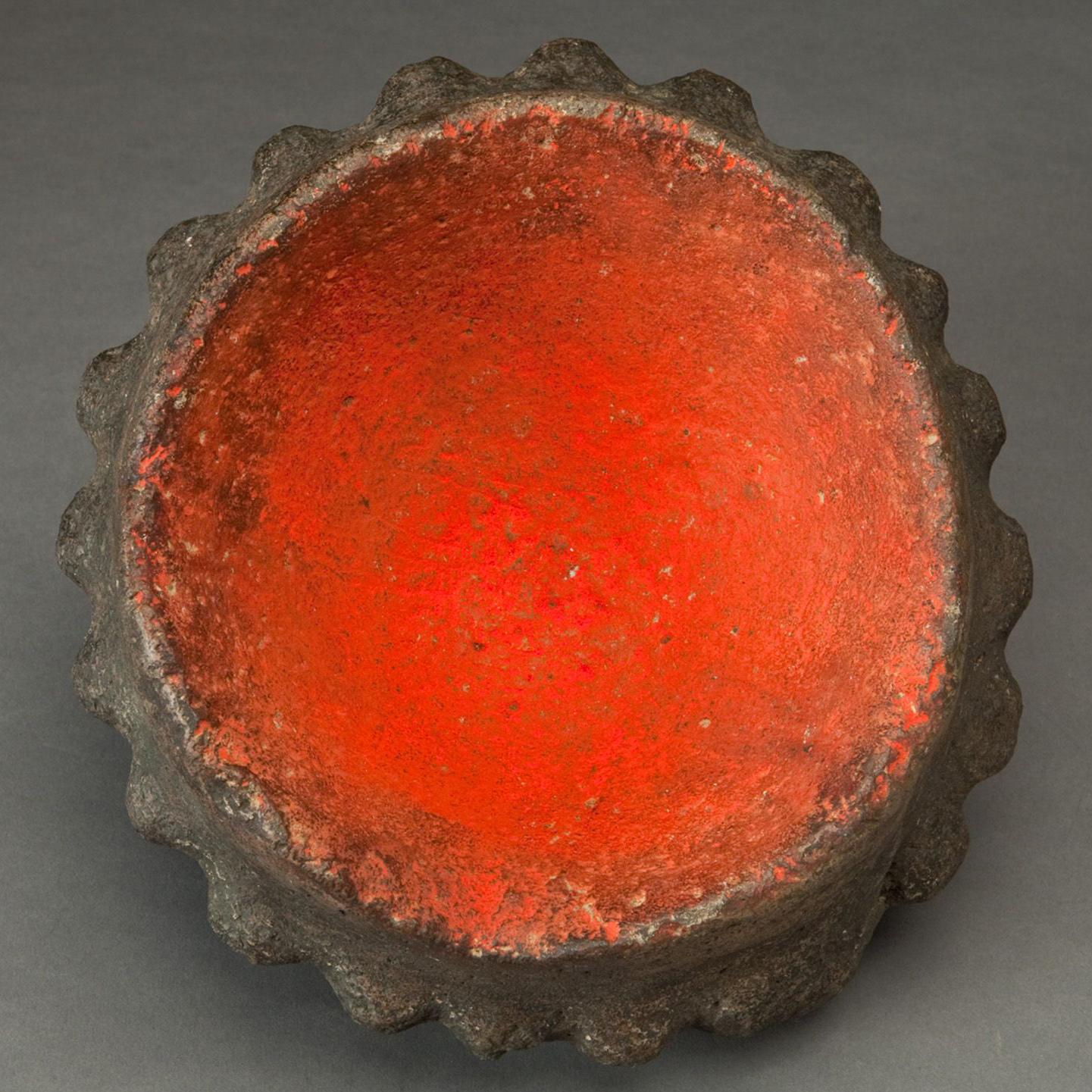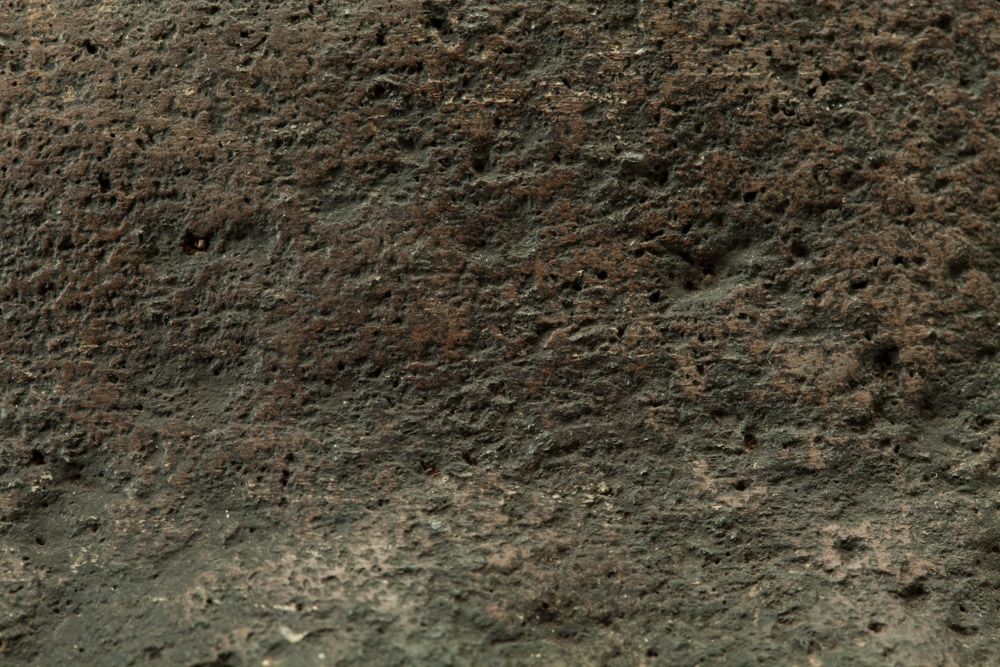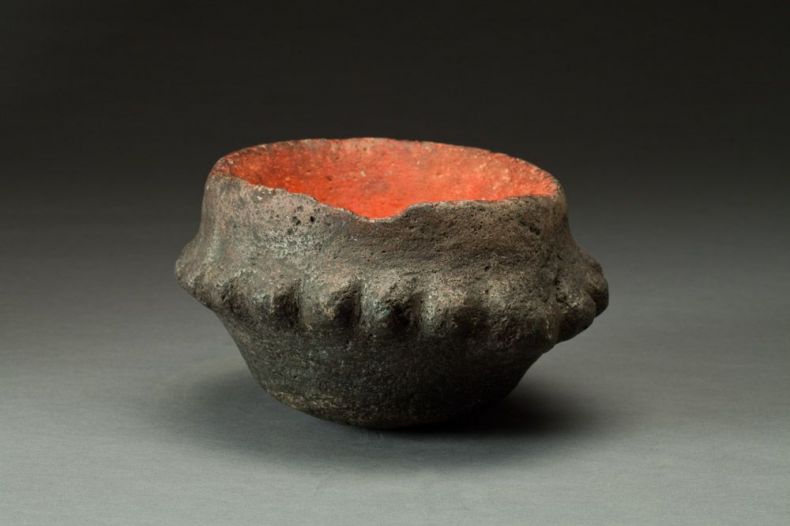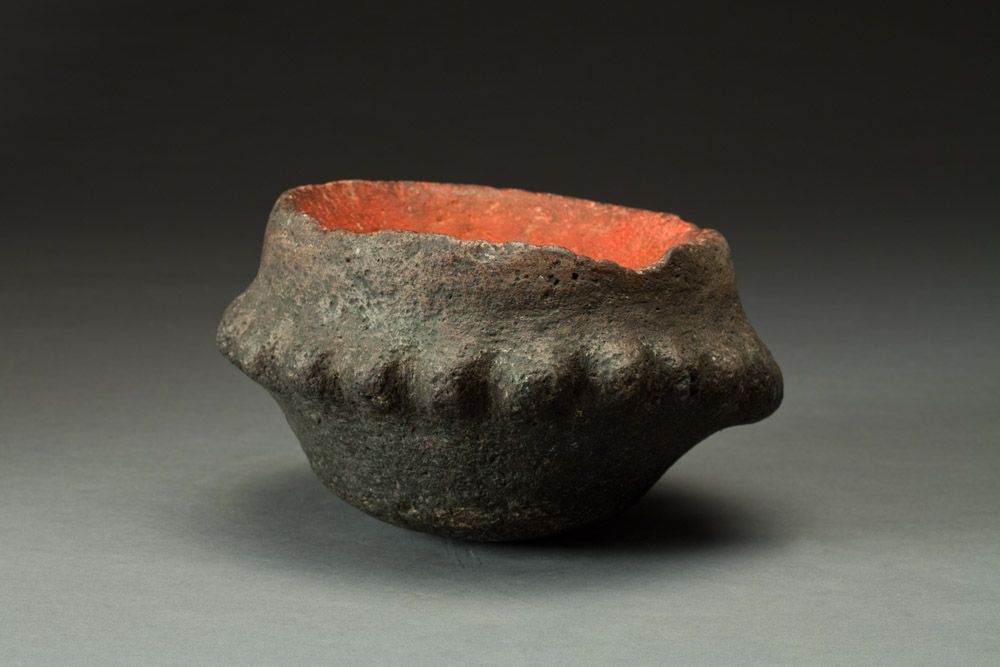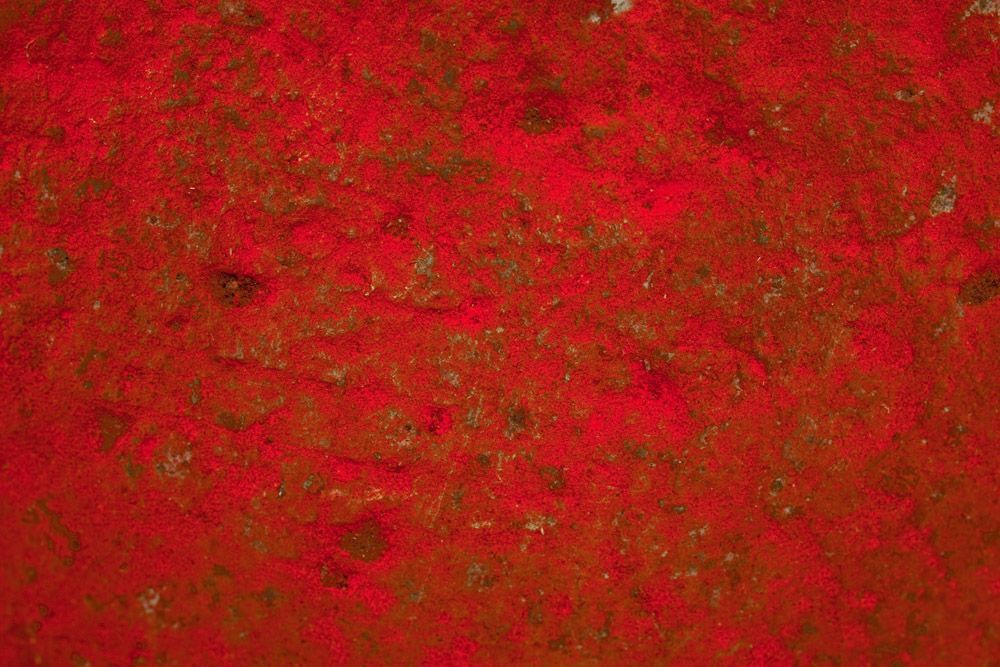Highlands, Papua New Guinea
Stone, pigment
4000-2000 BPE
11 x 6.5 in/28 x 16.5 cm
Stone mortars of this type represent the oldest form of art surviving from one of the earliest continuously inhabited places on earth. Mortars, some of which were decorated with birds and others with human faces, were known to be found by tribesmen of the Highlands when digging in their yam gardens where they had fallen in ancient times; it is likely they had been used in the same location long ago to mash taro or other tropical plants and pudding mixtures. Such discoveries were interpreted to be of a profoundly mystical and otherworldly nature and the objects would be promptly incorporated into the ritual life of the finders. In Highlander symbolism, the bright red color inside the mortar equates with blood, while the concave-receptive form, with breast-like projections, is female and relates to fertility, while the pestle, now lost, would be understood to be phallic. The color comes from the preparation of ocher and “sing-sing paint” which has been available in trade stores in the Highlands for the last 60 years and is greatly prized by locals. This piece is accompanied by an email of authentication by Dr Pamela Swadling, the world’s foremost authority on the subject. This mortar achieves a sculptural aesthetic that is at once universal, archaic and post modern. It is also very rare. There are four other known examples of this type of knobby edge variety, three in the Frankfurt Museum of World Cultures, two of which are damaged, and one in the National Gallery of Australia which come with an excellent description on line for comparison, a link here provided:
http://artsearch.nga.gov.au/Detail.cfm?IRN=189473
#30666
SOLD

